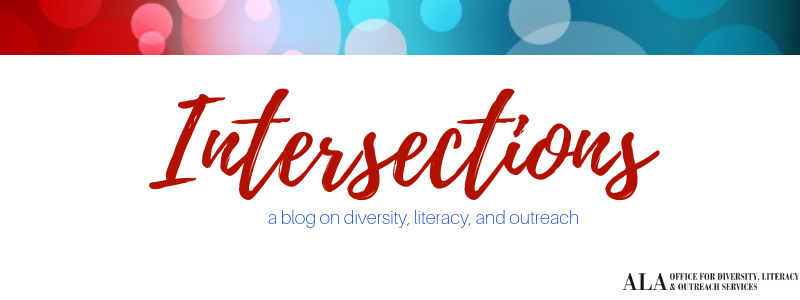
By: Chelsea Elwood, Supporting Library Specialist, Arapahoe Library District
In February 2019, the Public Library Association, a division within the American Library Association, held the Social Justice and Public Libraries: Equity Starts with Us symposium at the Denver Public Library. A group of us from the Arapahoe Library District (ALD) were in attendance, representing all levels of our organization. During the symposium, we often broke out into small groups or discussions. These discussion groups focused on the following topics: staff and hiring, management, environment and facilities, core principles, core services, programming, and collections. I participated in the collections breakouts.

Graphic Novel Display was created by Asia Groves at the Eloise May Branch of the Arapahoe Library District, January 2019
My work with ALD is nearly entirely patron-facing and customer service driven. As such, my peers and I are often the sole intermediaries between patrons and the collection. I approached the collections breakout discussion with the intent of bringing actionable items back to my peer group and deliberately incorporating social justice into patron-facing interactions as they relate to the libraries’ collection.
In the collections breakouts, we discussed not just collection development and maintenance. We mostly discussed the ways in which patron-facing staff interface with the collection. This often looks like shelving, creating displays, merchandising, and readers advisory. In short, what collection items do we choose to highlight in our daily work? Here are some ways that patron-facing and support staff can actively contribute to equity, diversity, and inclusion (EDI) initiatives in our everyday tasks:
- Consume more diverse media! It’s so difficult to recommend material that we haven’t read/watched/listened to. Need help diversifying your reading list? Try consulting one of your institution’s librarians or use Book Riot’s Read Harder Challenge as a guide.
- Display and recommend material by people from marginalized communities, not just about marginalized communities. These materials exist! Use your privilege and place of authority to raise up stories by creators with diverse backgrounds. This is a great way to practice being an ally!
- Highlight diverse materials year-round, not just as a special occasion. So you had an incredible display during February for Black History Month with intersectional perspectives and not just stories about slavery - great! Can you include stories of POC in your Pride display in June? And in your poetry display in April? And in your holiday display in December/January? Challenge yourself to expand on the work you’re already doing - it’s very likely the perspectives you’re looking for are already out there.
YA Pride Display was created by Jen McKelvy and Laura Reed at the Smoky Hill Branch of the Arapahoe Library District, June 2019
By all accounts, patron-facing staff already do an incredible job of helping connect patrons with materials in the collection. The above are just a few ways to add depth to this incredibly valuable work without adding too much training or labor time. Incorporating this work into the expectations for all library staff’s work will also serve to lessen the emotional labor often performed by staff representing marginalized communities. Libraries run the risk of putting both staff and patrons into boxes. For example, we don’t want to further marginalize a staff member who is also part of the LGBTQIA+ community by expecting them to be the experts in all things LGBTQIA+. Similarly, it’s good to remember that all kinds of patrons read books by all kinds of people. Don’t be afraid to recommend materials outside of a patron’s comfort zone or beyond a patron’s identities.
All of these suggestions are intended to act as tools for library staff to do better and build on the existing foundations in our organizations. Not all of these suggestions will work for everyone or for every situation. It’s my ultimate goal that we, as library professionals, should always be striving to learn and grow in this field of work. I hope these suggestions further your learning and growth!
